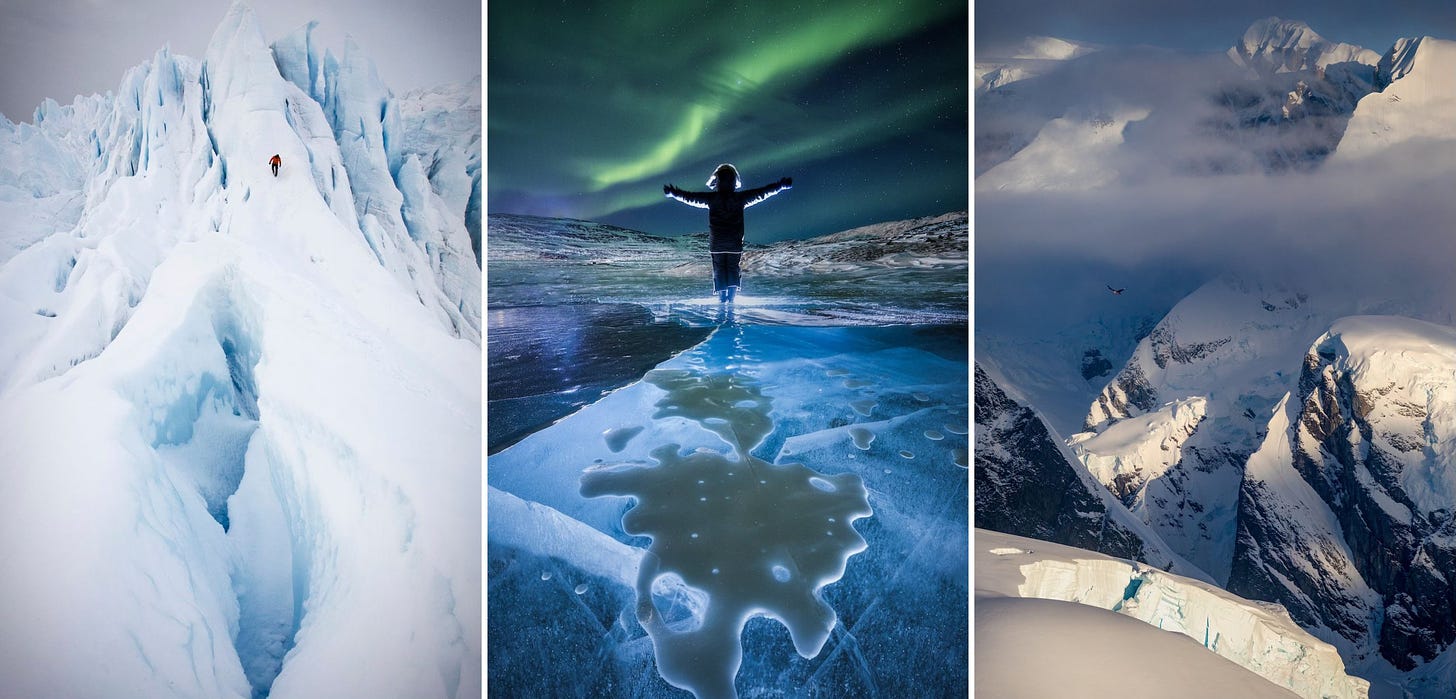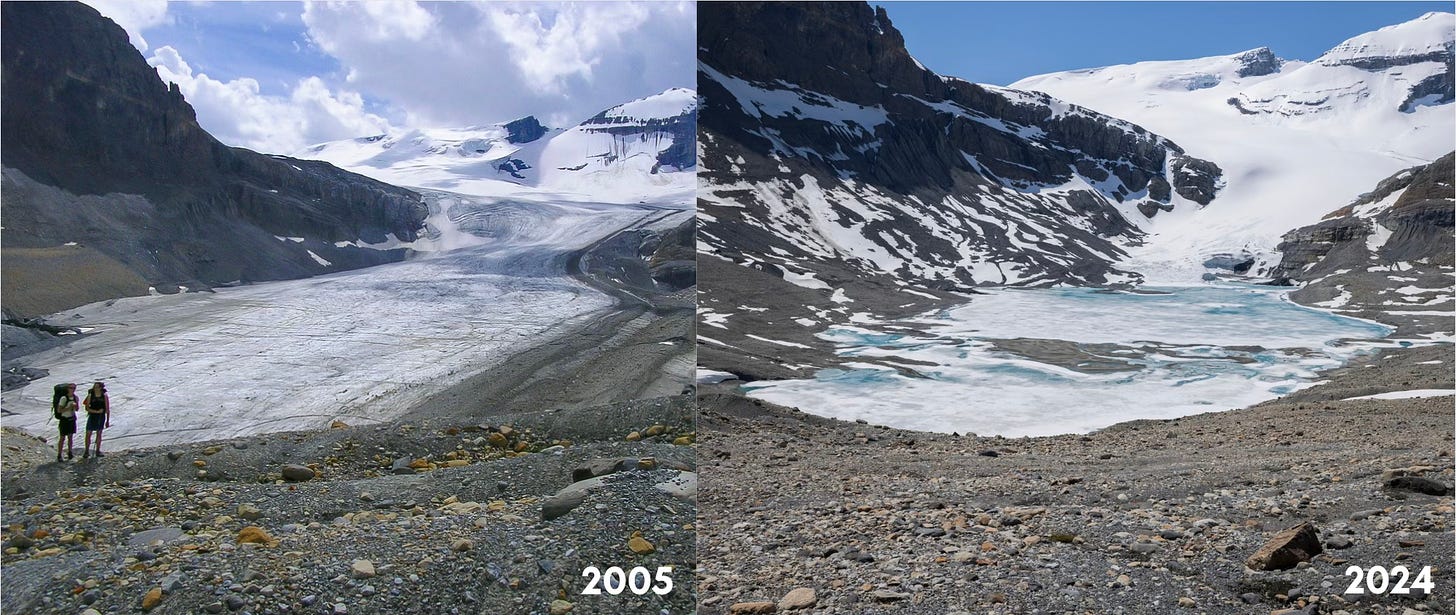Welcome to Cryophilia
Paul Zizka documents vanishing glaciers and ice features around the globe.
Bringing awareness to vanishing ice through the capturing of changing landscapes and ice features around the world.
Ever since I started in photography I have been fascinated by ice as a subject. At first glance, solid water may appear to be mundane as a subject. However, through extensive explorations at the high latitudes and cold parts of the planet, I've repeatedly marvelled at how ice can display an infinite array of textures, present ever-changing shades of blue and white, and interact with light in countless ways. Ice is never the same. In the face of that fact, I feel both fascination and heartache.
CRYOPHILIA
From ancient Greek meaning “frost loving,” cryophiles prefer or thrive at low temperatures.
It seems we’re only decades, maybe even a decade, away from some of this ice disappearing altogether. Some of the ice featured in my photographs taken just a few years ago is already gone. With rising temperatures, we risk the melting of our polar regions and our world’s glaciers. The implications of this are well-researched and documented. Many dedicated scientists are working to better understand what is happening and what is at stake. By and large, the practical consequences of melting ice are widely discussed — a role I leave to those who are qualified to speak about it. Where I feel I can best contribute is to use the power of photography to raise alarm at the loss of the aesthetics of ice and showcase its beauty for others to appreciate.
An example of glacial recession of the Peyto Glacier in Banff National Park. I took these two images nearly two decades apart.
Beyond the long-term human and environmental consequences of melting ice, for me, the loss of these frozen landscapes also signifies the loss of a unique, powerful experience. The stillness and silence of cold places are humbling and wonderfully eerie. The beauty in ever-changing and extraordinary ice features is a wonder to look at. It is a delight — and also a challenge — to capture with the camera. My calling as an artist is to continue to celebrate and document ice before it vanishes. Icescapes are among the most dynamic, exciting, and fascinating locations a photographer can hope to document. I consider it a privilege to be able to bring the beauty and mystery of these foreign, enchanting worlds to others.








I love this style of photography: pairing images across time. So much change is happening in our world. But is it really a unique phenomenon? I was struck by your sentence “With rising temperatures, we risk the melting of our polar regions and our world’s glaciers.” Do WE risk it? Or is it just something we are here to observe and experience? Had someone been able to take photos 12,000 years ago, there could have been some stunning ice loss imagery captured in Ohio, some 2000 miles south of the present limit of the North American polar ice cap. The ice has been melting for a long time. I’m glad cameras and GPS have come along just in time to catch the final act.
I'm looking forward to seeing your documentation of ice and the process that will be uncovered. What a great project!